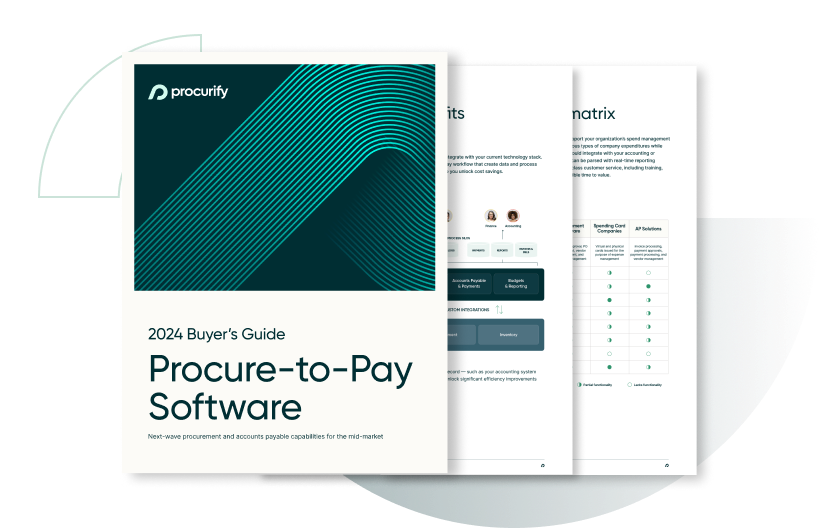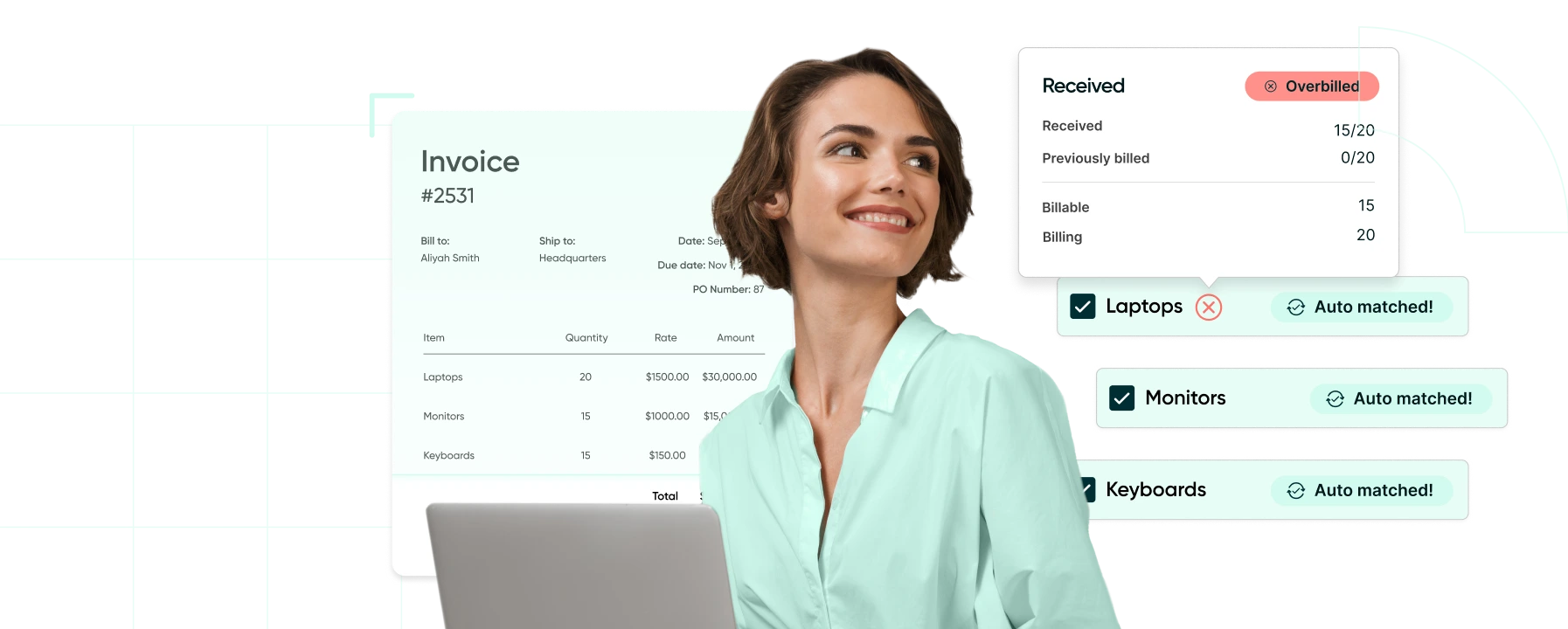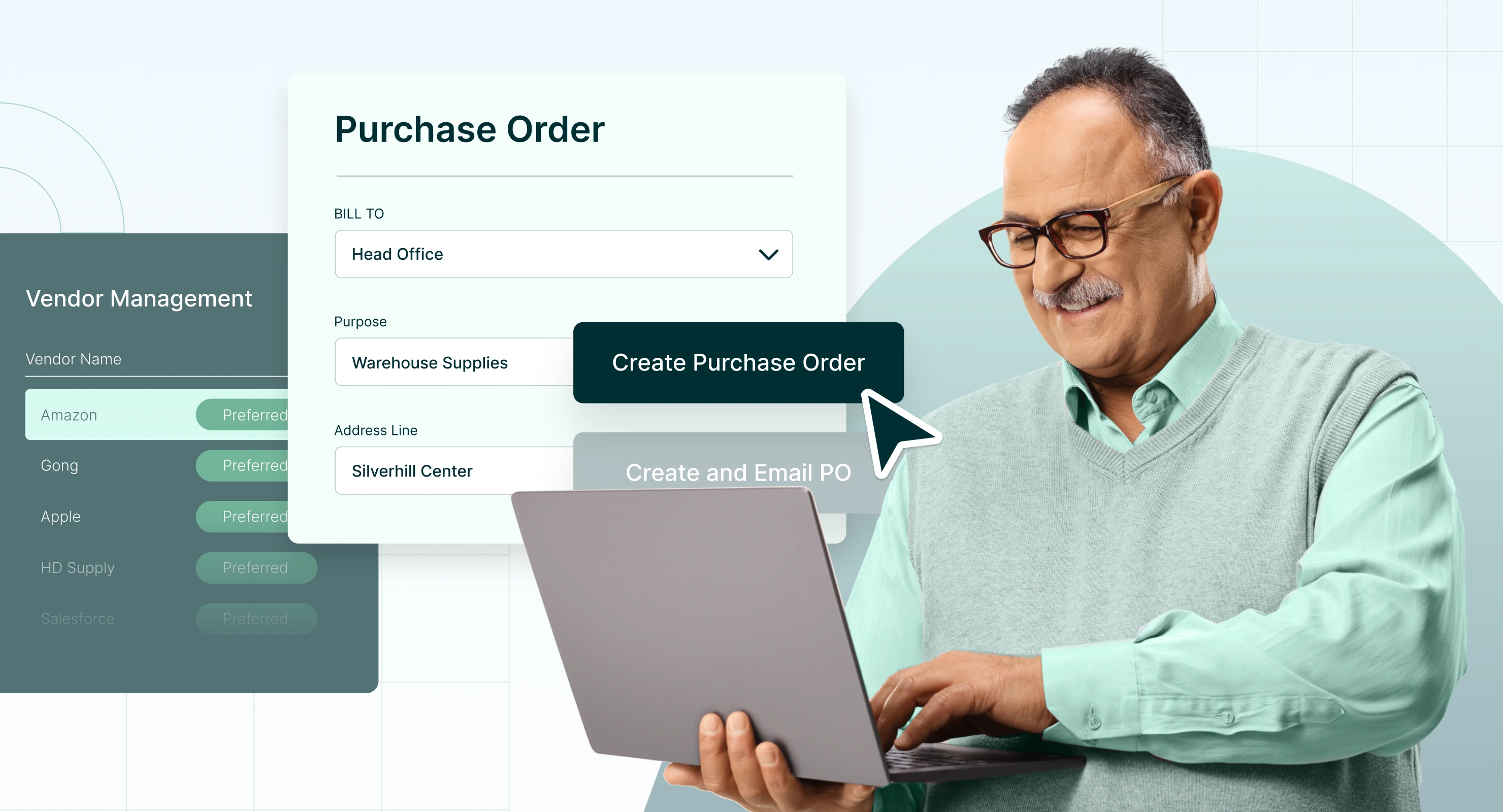
Procurement Strategy: 8 Essential Steps to Success
Procurement strategy is about how a company buys goods and services. It’s a plan that helps businesses decide what to buy, who to buy it from, and how to do it efficiently. This strategy is crucial because it affects how much the company spends and its ability to get the right quality of goods and services.
A good procurement strategy is more than just finding the cheapest options. It involves making choices that fit the company’s goals, like saving money, ensuring quality, or getting supplies quickly. It also includes managing relationships with suppliers, handling contracts, dealing with risks, and using technology to make procurement smoother.
Having a clear procurement strategy is important for any business. It helps control costs, makes operations run smoothly, and keeps the company competitive. Especially now, with complex global supply chains, a well-planned strategy is essential to handle challenges and grab new opportunities.
In this article, we’ll walk through the basics of creating a procurement strategy. We’ll cover how to evaluate your current buying processes, set clear goals, choose the right approach, manage suppliers, use technology, and stay flexible to changes. This guide is for anyone looking to improve how their business buys goods and services, whether you’re new to procurement or have been in the field for a while.
1: Starting with the basics: What you need to know
Before diving into building a procurement strategy, it’s important to understand what is procurement. Procurement involves not just buying goods and services, but doing so in a way that adds value to your organization.
Key elements of procurement:
-
Understanding Needs:
Know what your organization needs, not just in terms of products and services, but also in quality, quantity, and timing.
-
Supplier Selection:
Choosing the right suppliers is crucial. It’s not always about the lowest price. Reliability, quality, and service are also key factors.
-
Negotiation:
Effective negotiation is about reaching a deal that benefits both your company and the supplier. It’s a balance of cost, quality, and service.
-
Contract Management:
Managing contracts effectively ensures that the terms agreed upon are met and both parties are satisfied.
-
Risk Management:
Identifying and managing risks associated with procurement activities is essential to avoid disruptions.
-
Ethical and Sustainable Practices:
Ethical sourcing and sustainability are increasingly important in procurement. This includes considering the environmental and social impact of procurement decisions.
Aligning procurement with business goals:
Your procurement strategy should support your overall business goals. Whether it’s cost-saving, innovation, quality improvement, or sustainability, ensure that your procurement decisions align with these larger objectives.
This section lays the groundwork for understanding the fundamental aspects of procurement. With this foundation, you can start to build a procurement strategy that is effective, efficient, and aligned with your business goals.
2: Evaluating your current procurement processes
To build an effective procurement strategy, it’s crucial to first understand your current procurement process. This evaluation will help identify what’s working well and what needs improvement.
Steps for evaluating your current procurement processes:
-
Review Current Practices:
Look at how procurement is currently handled in your organization. This includes how orders are placed, how suppliers are chosen, and how contracts are managed.
-
Analyze Spend Data:
Examine your spending patterns. Understanding where your money goes can reveal a lot about your procurement efficiency and opportunities for cost savings.
-
Assess Supplier Performance:
Evaluate your current suppliers. Are they reliable? Do they deliver quality goods and services on time? Supplier performance directly affects your business operations.
-
Identify Gaps and Challenges:
Look for areas where your procurement process is lacking. This could be in technology use, process efficiency, or compliance with policies.
-
Gather Feedback:
Get input from different departments. They can provide insights on how procurement affects their work and suggest areas for improvement.
-
Benchmark Against Best Practices:
Compare your processes with industry standards or competitors. This can highlight areas where you’re behind and where you can learn from others.
Outcome of the evaluation:
The goal of this evaluation is to have a clear understanding of your procurement strengths and weaknesses. This insight is crucial for building a strategy that addresses your specific needs and improves overall efficiency.
By the end of this section, you should have a comprehensive view of your current procurement processes, setting a solid foundation for developing a more strategic approach in the following sections.
Deep dive into the procurement process.
3: Defining your procurement goals and objectives
After evaluating your current procurement processes, the next step is to set clear and achievable goals for your procurement strategy. These goals should align with your overall business objectives and address the gaps and challenges identified in your evaluation.
Key considerations for setting procurement goals:
-
Specificity:
Your goals should be specific. Instead of a general goal like ‘reduce costs,’ aim for something more precise, such as ‘reduce office supply costs by 10% within the next year.’
-
Measurability:
Ensure that your goals are measurable. This allows you to track progress and make adjustments as needed.
-
Achievability:
Set realistic goals. Overly ambitious goals can be demotivating if they’re not achievable, while too easy goals might not bring significant improvements.
-
Relevance:
Your procurement goals should be relevant to your overall business strategy. For example, if your business is focusing on sustainability, one of your procurement goals could be to increase the purchase of eco-friendly products.
-
Time-Bound:
Assign a clear timeline to each goal. This helps in creating urgency and focus.
Examples of common procurement objectives:
-
Reducing costs without compromising quality.
-
Improving supplier relationships and performance.
-
Enhancing the efficiency of procurement processes.
-
Ensuring compliance with regulations and ethical standards.
-
Incorporating sustainable and eco-friendly procurement practices.
Aligning goals with business strategy:
Remember, the ultimate aim of your procurement strategy is to support your business’s success. Therefore, aligning your procurement goals with your business strategy is crucial. This alignment ensures that every procurement decision contributes to the broader objectives of your company.
By the end of this section, you should have a clear set of procurement goals that are tailored to your business needs and aspirations, providing a roadmap for the strategic decisions and actions in the subsequent stages of your procurement strategy.
4: Crafting your procurement strategy: A step-by-step guide
With a clear understanding of your current processes and well-defined goals, the next step is to develop your procurement strategy. This strategy should serve as a roadmap for how your organization will manage and optimize its procurement activities.
Steps to develop your procurement strategy:
-
Choose the Right Approach:
Decide whether a centralized or decentralized procurement approach is best for your organization. Centralized procurement can lead to better standardization and cost savings, while decentralized procurement can offer more flexibility and speed.
-
Supplier Selection and Management:
Develop criteria for selecting and evaluating suppliers. Consider factors like cost, quality, reliability, and ethical practices. Building strong relationships with key suppliers can lead to better terms and collaboration.
-
Negotiation Strategies:
Create guidelines for negotiation that aim for mutually beneficial agreements with suppliers. Effective negotiation can lead to cost savings and improved service.
-
Implement Technology Solutions:
Identify and implement technology solutions that can streamline your procurement process. This could include electronic procurement systems, inventory management software, or supplier management tools.
-
Risk Management Plan:
Develop a plan to identify and mitigate risks in your procurement process. This includes supplier risks, contractual risks, and market risks.
-
Performance Measurement:
Establish metrics to measure the performance of your procurement strategy. This could include cost savings, supplier performance, process efficiency, and compliance rates.
-
Continuous Improvement:
Set up a process for regular review and improvement of your procurement strategy. The business environment and market conditions are always changing, so your strategy should be adaptable.
Implementing your strategy:
Once your strategy is developed, the next step is implementation. This involves communicating the strategy across your organization, training relevant staff, and setting up the necessary systems and processes. It’s important to ensure that everyone involved understands their role in the procurement process and the overall goals of the strategy.
By the end of this section, you should have a comprehensive guide to developing and implementing a procurement strategy that aligns with your business goals and enhances your procurement operations.
5: Building and managing supplier relationships effectively
An integral part of a successful procurement strategy is the effective management of supplier relationships. Strong relationships with suppliers can lead to better pricing, higher quality products, and more reliable service.
Key aspects of supplier relationship management:
-
Selecting the Right Suppliers:
Not all suppliers are equal. Choose suppliers who align with your business values and objectives. Consider factors like reliability, cost, quality, and ethical practices.
-
Communication:
Maintain open and consistent communication with your suppliers. Clear communication helps in resolving issues quickly and fosters a strong partnership.
-
Performance Evaluation:
Regularly evaluate your suppliers based on their performance. This includes assessing their delivery times, product quality, and responsiveness to issues.
-
Collaboration:
Look for opportunities to collaborate with your suppliers. This could involve joint development of products, shared marketing initiatives, or working together to improve processes.
-
Long-Term Relationships:
Focus on building long-term relationships with key suppliers. Long-term partnerships can lead to better terms, as suppliers are more likely to invest in a mutually beneficial relationship.
-
Handling Conflicts:
Have clear strategies for managing conflicts with suppliers. Addressing issues promptly and fairly can prevent minor problems from escalating into major disputes.
Benefits of effective supplier management:
Effective supplier management can lead to numerous benefits, including cost savings, improved product quality, and a more resilient supply chain. It can also contribute to innovation, as suppliers often have unique insights and expertise that can benefit your business.
By the end of this section, you should understand the importance of supplier relationship management and have strategies to build and maintain strong supplier relationships, contributing significantly to the success of your procurement strategy.
6: Embracing technology: Tools for modern procurement
In today’s fast-paced business environment, leveraging technology is crucial for an efficient and effective procurement process. Technology can streamline operations, reduce costs, and provide valuable insights.
Key technological tools in procurement:
-
E-Procurement Systems:
Procurement systems automates many aspects of the procurement process, from order placement to invoice processing. They can lead to significant efficiency gains and cost savings.
-
Supplier Management Software:
This type of software helps manage supplier information, performance, and interactions. It can streamline supplier selection and evaluation processes.
-
Inventory Management Tools:
These tools help track inventory levels, orders, sales, and deliveries. Effective inventory management can reduce costs and improve order accuracy.
-
Spend Analysis Tools:
These tools analyze spending data to identify cost-saving opportunities and make informed procurement decisions.
-
Contract Management Software:
This software helps manage contracts efficiently, ensuring compliance and timely renewals.
-
Risk Management Tools:
These tools help identify and manage risks associated with suppliers and procurement activities.
Integrating technology into your procurement strategy:
When integrating technology into your procurement strategy, consider your specific needs and challenges. Start by identifying areas where technology can have the most significant impact. It’s also important to ensure that your team is trained to use these tools effectively.
Benefits of technology in procurement
The right procurement software can transform your procurement process. Benefits include increased efficiency, reduced errors, better data for decision-making, and improved supplier relationships. Technology also supports a more agile procurement process, enabling quick adaptation to market changes or supply chain disruptions.
By the end of this section, you should have a clear understanding of the various technological tools available for procurement and how they can be integrated into your strategy to improve efficiency and effectiveness.
8: Evolving your strategy: The path to continuous improvement
A procurement strategy should not be static. As your business and the external environment evolve, so too should your approach to procurement management. Continuous improvement is key to maintaining relevance and effectiveness.
Strategies for continuous improvement in procurement:
-
Regular Review and Adaptation:
Periodically review your procurement strategy to ensure it aligns with current business goals and market conditions. Be prepared to adapt your approach in response to new challenges and opportunities.
-
Feedback Loops:
Establish feedback mechanisms within your organization and with suppliers. Feedback is crucial for identifying areas for improvement and innovation.
-
Stay Informed on Market Trends:
Keep abreast of changes in the market, including new technologies, supplier landscape shifts, and industry best practices. This knowledge can inform strategic adjustments.
-
Invest in Training and development:
Ensure that your procurement team has the skills and knowledge to effectively implement your strategy. Ongoing training and professional development are vital.
-
Leverage Data for Decision Making:
Use data analytics to gain insights into your procurement processes. Data can reveal trends, inefficiencies, and opportunities for cost savings.
-
Foster a Culture of Improvement:
Encourage a mindset of continuous improvement within your team. This involves being open to change, experimenting with new approaches, and learning from both successes and failures.
The journey ahead:
Remember, building and refining a procurement strategy is a journey, not a one-time task. It requires ongoing effort, attention, and willingness to adapt. By committing to continuous improvement, your procurement strategy will not only support your current needs but also position your organization for future success and resilience.
By the end of this section, you should be equipped with strategies for keeping your procurement strategy dynamic and responsive, ensuring it continues to meet the evolving needs of your business.





